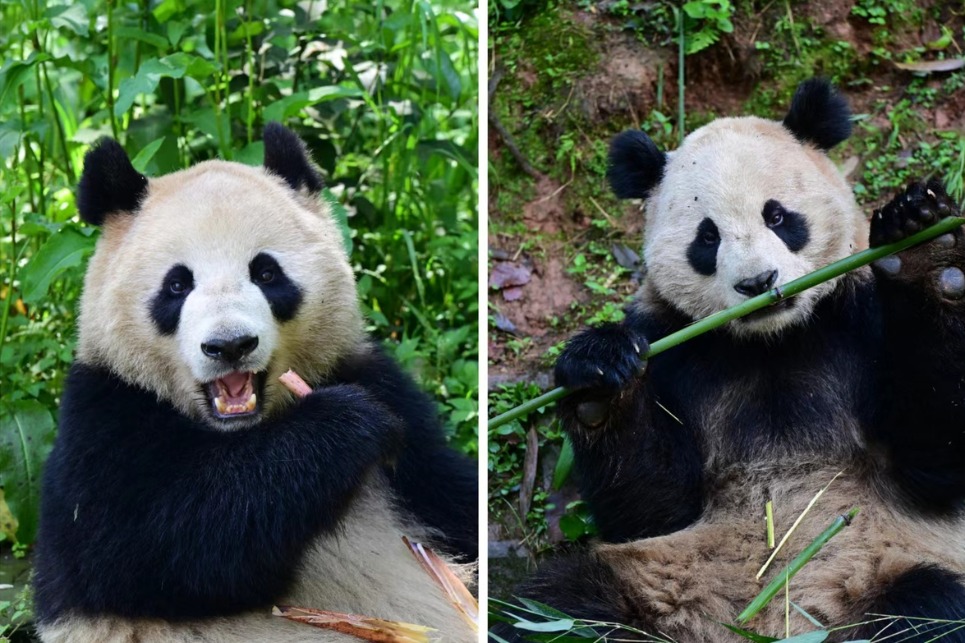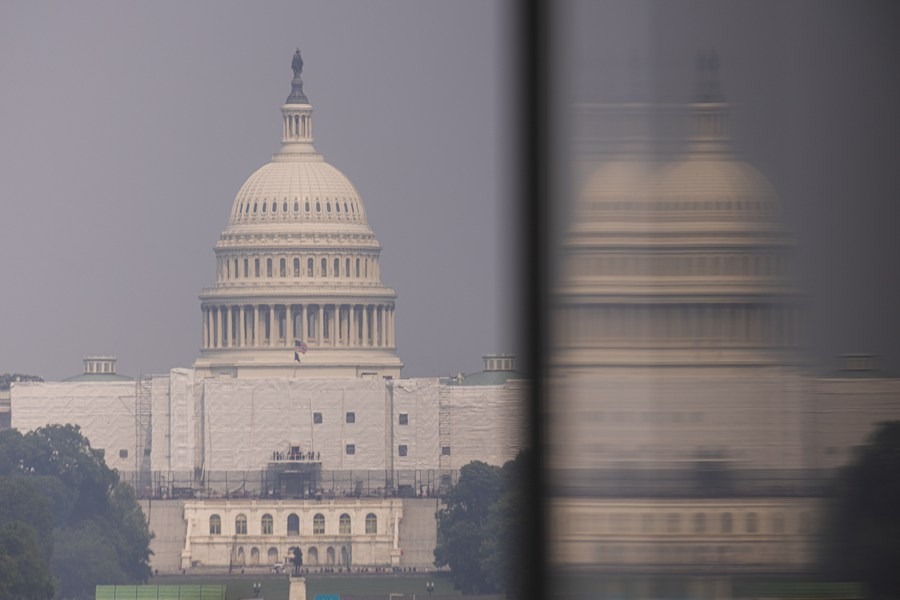San Diego Zoo welcomes two giant pandas from China
By RENA in Los Angeles | chinadaily.com.cn | Updated: 2024-06-28 13:23

After a 7,300-mile flight, two pandas — 5-year-old male Yun Chuan and 4-year-old female Xin Bao — arrived at the San Diego Zoo on Thursday, ushering in a new chapter of "panda-monium".
As the first pandas to enter the United States in 21 years, their return is part of a 10-year research and conservation agreement between San Diego Zoo Wildlife Alliance (SDZWA) and the China Wildlife Conservation Association (CWCA).
The pandas were accompanied by nutritionists and veterinarians to ensure the pandas enjoy "carefully prepared fresh bamboo, bamboo shoots, fruit, vegetables and specially made steamed buns" during their flight.
Chinese experts will remain at the zoo for approximately three months to assist the pandas through their quarantine and adjustment period, according to a statement from the China Conservation and Research Center.
Yun Chuan is the son of Zhen Zhen, who was born at the San Diego Zoo in 2007. Zhen Zhen's parents were Bai Yun and Gao Gao. The relocation of giant pandas to the zoo has ignited excitement and anticipation among zoogoers.
"It's awesome! They are so adorable, and I cannot wait to see them with my kids," Heather, a Los Angeles resident, told China Daily.
"Do pandas eat a lot of bamboo? I like their spots around their eyes. I will bring a gift for them," added Heather's 7-year-old daughter, Emily.
Although the San Diego Zoo has not hosted pandas since 2019, they are still on many people's minds.
"We were super excited that they are coming back to the city," a San Diego resident told the media, adding that it was sad when the previous pandas left.
As part of a new round of conservation efforts, more pandas will arrive at other American zoos, including a pair in Washington DC later this year.
Some visitors at the San Diego Zoo told the media that the pandas' return is a great opportunity for everyone and "doesn't have to do with politics".
A farewell ceremony took place in China on Wednesday for the US-bound pandas. San Diego Mayor Todd Gloria and representatives from the SDZWA attended the event in Sichuan province, according to the zoo's statement.
Yun Chuan and Xin Bao won't be immediately viewable to the public upon arrival. They'll acclimate to their new home behind the scenes for several weeks. Once the wildlife health and care teams deem them ready, the SDZWA will announce a debut date and provide details on how to see the pandas.
Paul Baribault, president and CEO of SDZWA, expressed excitement in welcoming two giant pandas, saying that it highlights their collaboration with China on vital conservation efforts.
"Our partnership with CWCA has been crucial for giant panda conservation, and we're committed to working together to ensure the survival and thriving of this iconic species," he said.
The San Diego Zoo was the first in the US to have a cooperative panda conservation program. In an interview with China Daily, Megan Owen, vice-president of conservation science at SDZWA, who has been involved with giant pandas' program for more than 25 years, emphasized the importance of collaboration between the two countries.
"I've had the great fortune of traveling to China many times to work with our colleagues in Chengdu, Wolong and other breeding centers," she said. "Through these collaborations, we've developed a number of initiatives that have meaningfully contributed to giant panda preservation, and we've also developed strong friendships along the way."
This year marks the 30th anniversary of the conservation partnership between the SDZWA and the CWCA. Through the collaboration, significant strides have been made in giant panda conservation. Notably, the giant panda's status was downgraded from endangered to vulnerable by the International Union for Conservation of Nature in 2016, according to the zoo. The World Wildlife Fund also considers pandas vulnerable.
Officials from both nations stated that the pandas' relocation is part of ongoing efforts to protect the species.
China first sent pandas to the US in 1972, when two arrived at the National Zoo in Washington DC. The goal of lending pandas to American zoos included aiding breeding programs and boosting the panda population.
The conservation efforts have successfully increased the giant panda population from fewer than 1,000 to over 1,800 in the wild and in captivity.
























